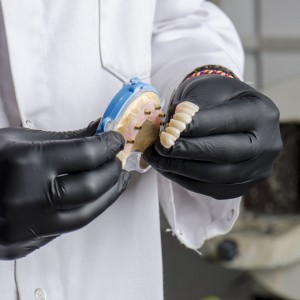
Artificial intelligence performance in answering multiple-choice oral pathology questions: a comparative analysis
Background
Artificial intelligence (AI) has rapidly advanced in healthcare and dental education, significantly impacting diagnostic processes, treatment planning, and academic training. The aim of this study is to evaluate the performance differences between different large language models (LLMs) by analyzing their accuracy rates in answers to multiple choice oral pathology questions.
Methods
This study evaluates the performance of eight LLMs (Gemini 1.5, Gemini 2, ChatGPT 4o, ChatGPT 4, ChatGPT o1, Copilot, Claude 3.5, Deepseek) in answering multiple-choice oral pathology questions from the Turkish Dental Specialization Examination (DUS). A total of 100 questions from 2012 to 2021 were analyzed. Questions were classified as “case-based” or “knowledge-based”. The responses were classified as “correct” or “incorrect” based on official answer keys. To prevent learning biases, no follow-up questions or feedback were provided after the LLMs’ responses.
Results
Significant performance differences were observed among the models (p < 0.001). ChatGPT o1 achieved the highest accuracy (96 correct, 4 incorrect), followed by Claude (84 correct), Gemini 2 and Deepseek (82 correct each). Copilot had the lowest performance (61 correct). Case-based questions showed notable performance variations (p = 0.034), where ChatGPT o1 and Claude excelled. For knowledge-based questions, ChatGPT o1 and Deepseek demonstrated the highest accuracy (p < 0.001). Post-hoc analysis revealed that ChatGPT o1 performed significantly better than most other models across both case-based and knowledge-based questions (p < 0.0031).
Conclusion
LLMs demonstrated variable proficiency in oral pathology questions, with ChatGPT o1 showing higher accuracy. LLMs shows promise as a supplementary educational tool, though further validation is required.
Authors: Birkan Eyup Yilmaz, Busra Nur Gokkurt Yilmaz, Furkan Ozbey
Source: https://link.springer.com/
 Tag
Tag
 Related articles
Related articles
Digital Dentistry 22 October 2025
Artificial intelligence in dentistry: Exploring emerging applications and future prospects
This narrative review aimed to explore the evolution and advancements of artificial intelligence technologies, highlighting their transformative impact on healthcare, education, and specific aspects...
Digital Dentistry 15 October 2025
The Impact of Artificial Intelligence on Diagnostic Accuracy and Treatment Planning in Dentistry
The use of AI in dentistry is revolutionizing the field of dentistry by enhancing the accuracy of diagnosis and treatment.
Artificial intelligence (AI) is the development of computer systems whereby machines can mimic human actions. This is increasingly used as an assistive tool to help clinicians diagnose and treat...
Restorative dentistry 25 February 2025
Artificial intelligence applications in restorative dentistry: A systematic review
Artificial intelligence (AI) applications are increasing in restorative procedures. However, the current development and performance of AI in restorative dentistry applications has not yet been...
Periodontal disease is a chronic inflammatory disease that affects the periodontium and is classified into gingivitis and periodontitis with reversible and irreversible tissue damage.
 Read more
Read more
Prosthodontics 31 October 2025
Rapid Prototyping Technologies and their Applications in Prosthodontics, a Review of Literature
The early computer-aided design/computer-aided manufacturing (CAD/CAM) systems were relied exclusively on subtractive methods.
Silencing a receptor in prostaglandins reduces pain but allows inflammation to run its course in animal and cellular studies.
Products 31 October 2025
Barrett Distribution Centers is proud to announce a new partnership with Willo, an oral hygiene company creating innovative dental products for kids. Barrett will provide warehousing, fulfillment,...
News 31 October 2025
Relu.ai, an AI scale-up that brings automatic design to dentistry, has now received CE certification (under the EU MDR) for its AI automatic implant planning solution.
News 31 October 2025
Four Corners Property Trust (NYSE: FCPT), a real estate investment trust primarily engaged in the ownership and acquisition of high-quality, net-leased restaurant and retail properties (“FCPT” or...















